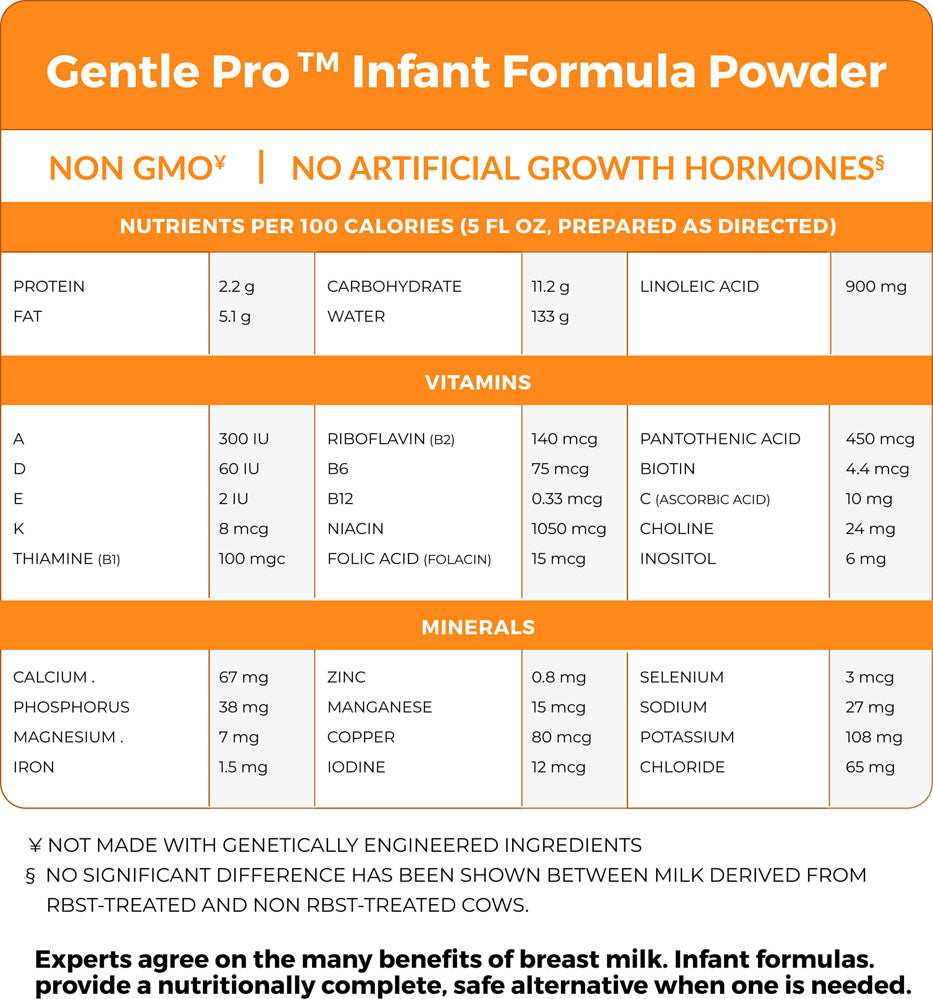
1
/
of
1
WITH PROBIOTIC B. LACTIS A TUMMY-FRIENDLY PROBIOTIC LIKE THE ONES FOUND IN BREASTMILK
Gentle Pro™ Infant Formula
Gentle Pro™ Infant Formula
Designed to provide complete nutrition for infants with sensitive stomachs. Gentle Pro infant formula features 100% whey protein that has been partially hydrolyzed through an advanced 2-step hydrolysis and is easy to digest. This advanced hydrolysis uses heat and enzymes to create proteins 10x smaller than those of intact cow’s milk proteins.
- Enriched with B. lactis*, a tummy-friendly probiotic like the ones found in breastmilk, helps support a balanced gut microbiota
- Promotes softer, more regular stools^1
- Clinically shown to deliver a gastric emptying time similar to breastmilk at 30 minutes2
High Quality 100% Whey Protein, Partially Hydrolyzed
- Easy to digest small proteins, 10x smaller than intact cow’s milk protein
- Free from curdling that can be caused by dairy casein
Probiotic B. Lactis
- Clinically shown to promote a balanced gut microbiota
- Clinically shown to support the developing immune system by increasing sIgA3
Prebiotic 2’-FL HMO** (Human Milk Oligosaccharide)
- Prebiotic just like those found at significant levels in breastmilk4
- Helps support digestive health and the developing immune system5
Nutrient Detail + Mixing Instructions
- * B. lactis=Bifidobacterium lactis. IgA=Immunoglobulin A.
- ^Compared to intact protein formulas.
- **Human milk oligosaccharides (HMOs) are a group of prebiotics found in human milk, and 2’-FL is the most abundant found in breastmilk. The 2’-FL HMO in Good Start® | Dr. Brown’sTM Gentle Pro™ Infant Formula isstructurally identical to that in breastmilk. Not from human milk.

References:
- 1Czerkies L, et al. Int J Pediatr. 2018:4676758
- 2Billeaud C, et al. Eur J Clin Nutr. 1990;44(8):577-583
- 3Holscher HD, et al. J Parenter Enteral Nutr. 2012;36:106S-117S.
- 4Bode L. Glycobiology. 2012;22(9):1147-1162.
- 5Goehring, J Nutr 2016;146:2559-2566




